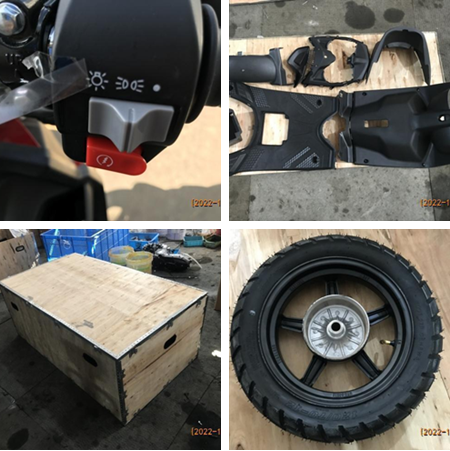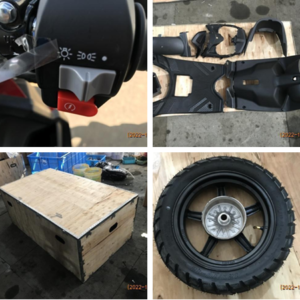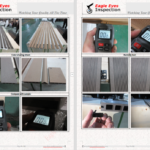
The inspection and testing points for motorcycles involve multiple aspects to ensure their safety, performance, quality, and compliance. The following are detailed inspection and testing points:
1. Appearance inspection
-Overall appearance: Check the overall appearance of the motorcycle for any scratches, dents, paint peeling, or rust.
-Paint quality: Check whether the paint surface is uniform, whether there is color difference, bubbles or sagging phenomenon.
-Plastic and metal parts: Check the surface of plastic and metal parts for smoothness, burrs, cracks, or deformation.
-Signs and decals: Check if the brand logo, decals, and warning labels are clear, secure, and positioned correctly.
2. Dimensional and structural inspection
-Size verification: Measure the key dimensions of the motorcycle, such as length, width, and height, to ensure compliance with the design specifications.
-Frame and welding: Check whether the frame structure is firm, whether the welding points are uniform and free of cracks.
-Screws and fasteners: Check whether screws, nuts, and other fasteners are installed in place, whether they are loose or missing.
3. Functional testing
-Startup performance: Test whether the motorcycle starts smoothly, whether the cold start and hot start are normal.
-Engine operation: Check if the engine runs smoothly and if there are any abnormal noises or vibrations.
-Transmission performance: Test whether the shifting is smooth and whether each gear is working properly.
-Braking system: Test whether the front and rear brakes are sensitive and whether the braking distance meets the standard.
-Lighting system: Check if the headlights, taillights, turn signals, brake lights, etc. are working properly and if the brightness meets the requirements.
-Instrument panel function: Check whether the instrument panel display is clear and whether various functions (such as speed, fuel level, mileage, etc.) are normal.
-Speaker and Alarm: Test whether the speaker and alarm system are working properly.
-Suspension system: Check whether the front and rear suspension systems are normal and whether the shock absorption effect is good.
-Tires and wheel hubs: Check if the tire pressure is normal and if the wheel hub is deformed or damaged.
4. Security testing
-Braking performance: Test the stability during emergency braking to ensure no skidding or loss of control.
-Light brightness and angle: Check if the light brightness and illumination angle meet safety standards.
-Reflectors and warning signs: Check if the reflectors and warning signs are installed properly and clearly visible.
-Protective devices: Check whether the mudguards, guardrails, and other protective devices are securely installed and meet safety requirements.
-Fuel system: Check whether the fuel pipeline is well sealed and whether there is any oil leakage.
5. Performance testing
-Acceleration performance: Test the acceleration performance of motorcycles to ensure compliance with design standards.
-Maximum speed: Test the maximum speed of the motorcycle to ensure compliance with regulatory requirements.
-Climbing ability: Test the motorcycle’s ability to travel on slopes to ensure sufficient power.
-Turning stability: Test the stability of the motorcycle during turning to ensure no tilting or slipping.
-Noise testing: Testing the noise level of motorcycles during operation to ensure compliance with environmental standards.
6. Durability testing
-Long term operation test: Test the performance of the motorcycle after prolonged operation to ensure no overheating or malfunctions.
-Vibration test: Check the vibration of the motorcycle during operation to ensure that there are no abnormal vibrations.
-Environmental adaptability: Test the performance of motorcycles in different environments (such as high temperature, low temperature, humidity, etc.).
7. Environmental Protection and Compliance
-Emission testing: Testing the exhaust emissions of motorcycles to ensure compliance with environmental standards (such as National VI, Euro V, etc.).
-Noise compliance: Check whether the noise level of the motorcycle meets regulatory requirements.
-Safety certification: Check whether the motorcycle has passed relevant safety certifications (such as 3C certification, ECE certification, etc.).
-Documents and identification: Check whether the accompanying documents (such as manuals, certificates of conformity, etc.) are complete and whether the identification meets the requirements.

1.Logo/Printing 3M Tape test
2.Assembly test
3.Basic function check (Functions on product specification work )
4.Actual Function test
5.Appearance
6.Measurement of product
7.Completeness of the body




